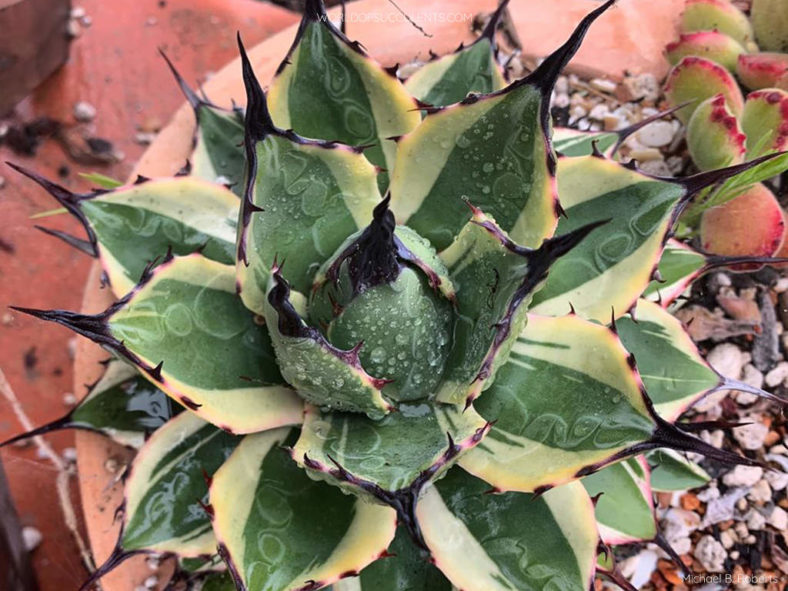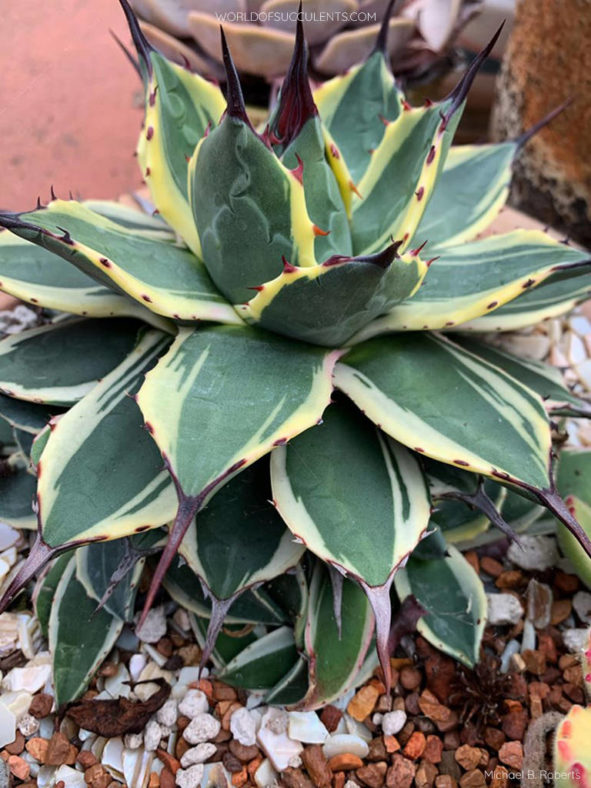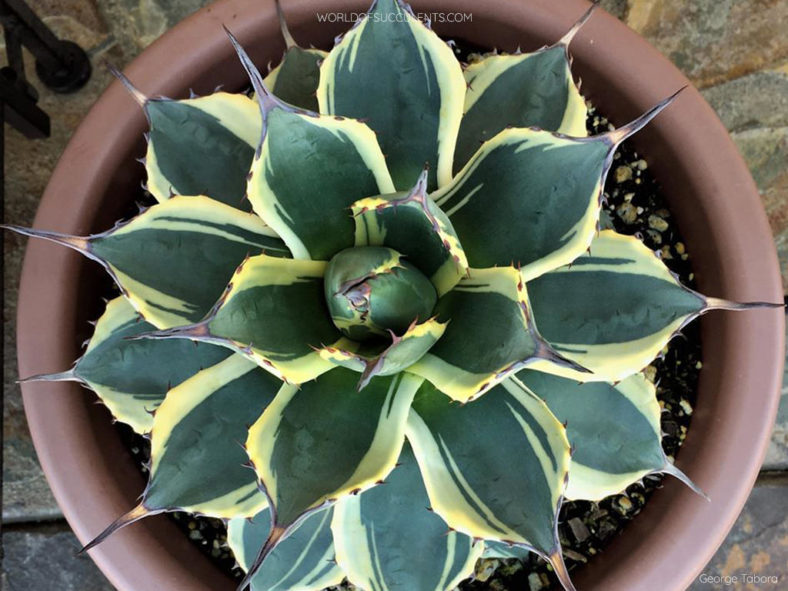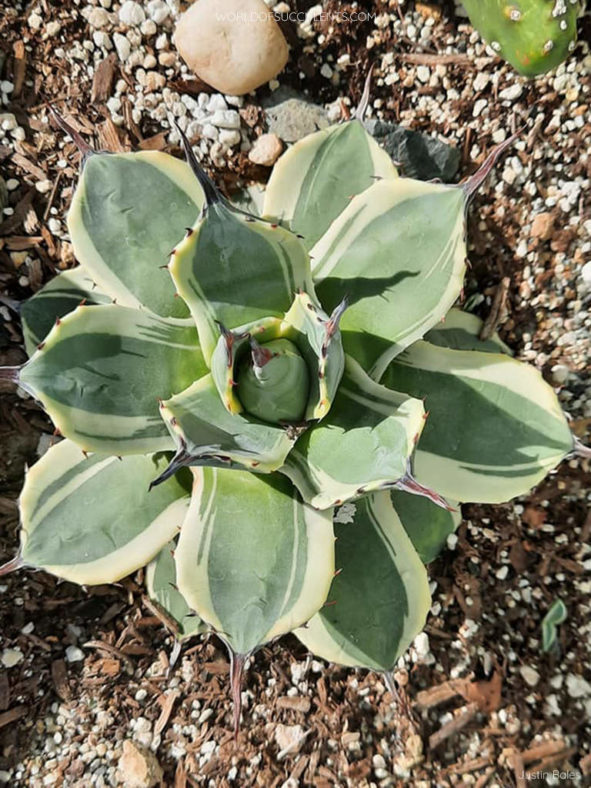Scientific Name
Agave 'Cream Spike'
Synonym(s)
Agave applanata 'Cream Spike'
Scientific Classification
Family: Asparagaceae
Subfamily: Agavoideae
Genus: Agave
Origin
Agave 'Cream Spike' is another one of those plants whose name is debated. It may be a cultivar of Agave applanata, but sometimes it is sold under names such as Agave minima 'Variegata', Agave patonii 'Alba Marginata', and Agave patonii 'Marginata'.
Description
Agave 'Cream Spike', also known as Agave applanata 'Cream Spike', is an attractive succulent that forms small, stemless rosettes of olive green to blue-green leaves with light yellow to cream-colored margins, small dark brown marginal spines, and a long terminal spine. The margins may seasonally get a red tinge at the tip and base of the leaves. The rosettes can grow up to 4 inches (10 cm) tall and 6 inches (15 cm) in diameter.

How to Grow and Care for Agave 'Cream Spike'
Light: Like all Agaves, this plant requires full sun to partial shade. If growing A. 'Cream Spike' indoors, choose a bright, sunny window with as much sun as possible. From spring to fall, it loves going outside.
Soil: A. 'Cream Spike' tolerates most soils with good drainage but prefers sandy or rocky soil.
Temperature: During the growing season, it likes warm temperatures, while in winter, when resting, this succulent enjoys cooler temperatures. A. 'Cream Spike' can withstand temperatures as low as 15 °F (-9.4 °C). USDA Plant Hardiness Zones 8b to 10b, 15 to 40 °F (-9.4 to 4.4 °C).
Watering: From spring to fall, water thoroughly when the soil becomes dry. In winter, water sparingly about once a month. Plants in containers require more frequent watering than those in the ground.
Fertilizing: Give your A. 'Cream Spike' a small amount of fertilizer in the spring during the first two years. After that, established plants seem to take care of themselves.
Repotting: If you notice your A. 'Cream Spike' becoming pot-bound, repot it with fresh soil in a pot slightly larger than the old one. Give the plant a week or so to readjust before you water it again.
Propagation: Since it can take years to produce seeds, A. 'Cream Spike' is usually propagated by offsets. The best time to remove the offsets is in spring and summer. Sow the seeds in spring.
Learn more at How to Grow and Care for Agave.
Toxicity of Agave 'Cream Spike'
A. 'Cream Spike' is not toxic to humans, but it may be mildly poisonous to children and pets.
Links
- Back to genus Agave
- Succupedia: Browse succulents by Scientific Name, Common Name, Genus, Family, USDA Hardiness Zone, Origin, or cacti by Genus
Photo Gallery
Click on a photo to see a larger version.


